Royal Enfield Classic 650: great looks, fun and vintage style - without the oil leaks
It’s funny how, when riding a ‘retro’, onlookers not normally interested in motorcycles often notice it. You get cheery waves, nods and smiles - rather as you do when walking a cute-looking dog. And that doesn’t happen with a modern sports or adventure bike, except among other enthusiasts.
So it was in and around London with Royal Enfield’s very handsome Classic 650. Is it because it looks like a ‘proper’ bike, or because onlookers think I’m driving a cherished old antique, something my dad passed on, perhaps, and that I’ve cosseted and nurtured over the years? Hard to tell.
Those in the know, however, quickly scan the front and rear wheels; the giveaway is always the brakes. A genuine old bike will usually have small drum brakes front and rear but this - one of Royal Enfield’s latest models - very definitely has discs, a shiny, single, 320mm up front and a 300mm at the other end.
Look more closely and you’ll spot a few other clues; it has proper modern tyres, not the ‘square’ ones you see on oldies, modern side-reflectors on the tail and forks and there’s no kick-starter; it has a pushbutton on the handlebars instead. It sounds quieter than an oldie too. Importantly, it won’t be leaking oil.
But wow, Royal Enfield has done a really good job of catching the old vibe; it’s a very good-looking machine indeed, with plenty of heft and presence and myriad stylish touches such as the big, reinforced metal mudguard at the back, the beautifully machined handlebar top clamp, the steel-cowled head and tail lights, shrouded forks, old-fashioned saddle, big, chromed, slightly splayed exhaust pipes and so on. It’s a proper ‘old’ bike, but one benefiting from modern engineering, decent brakes and, hopefully, good reliability.
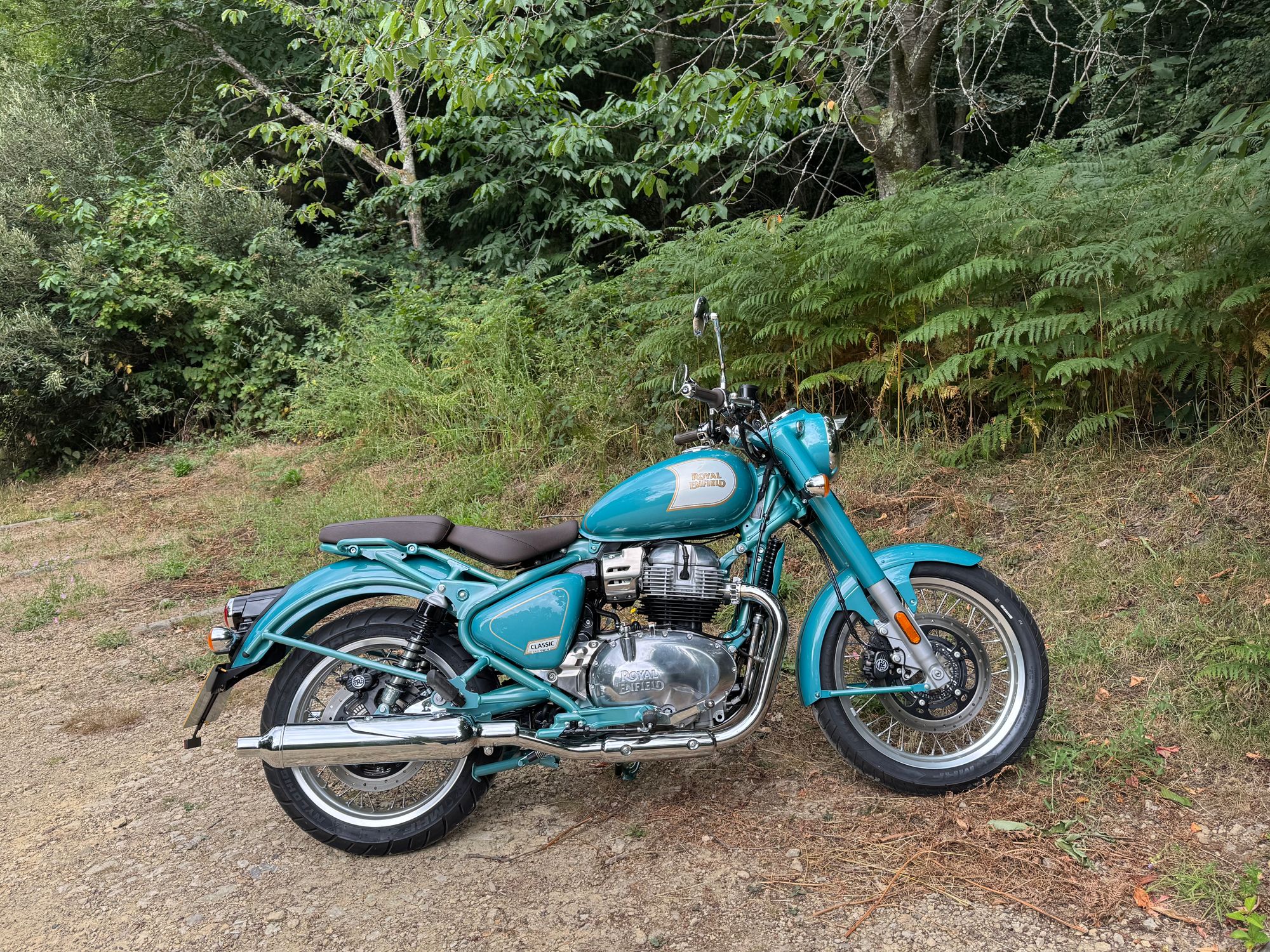
Torque of the town
At the heart of the Classic, harking back to Enfield’s first twin-cylinder bike, the ‘48 500 Twin, is a pleasing 647.95cc in-line twin-cylinder four-stroke, developing 46bhp and 38.5 ft lbs of torque, delivered to the rear wheel via a six-speed gearbox and chain. It’s fuel-injected of course, while other vital statistics include a (wet) kerb weight of 243 kilogrammes (so it’s on the heavy side), a seat height of 800 mm which means it’s fairly low for confidence in-town, a fuel capacity of 14.8 litres, ground clearance of just 154mm and, of course, antilock braking.
But enough stats; how’s it go? You know it’s going to be fun the minute you push that starter and hear the engine burble into life. It sounds just right, and it snicks into first gear nicely too, before you ease the light clutch out, point it down the road and burble away.
First thing I usually do is test the brakes at low speed (fine, no drama, the rear one seems highly effective compared with some others), then fine-tune the rear-view mirrors (old-fashioned round ones that aren’t at all bad), then play around with the foot levers.
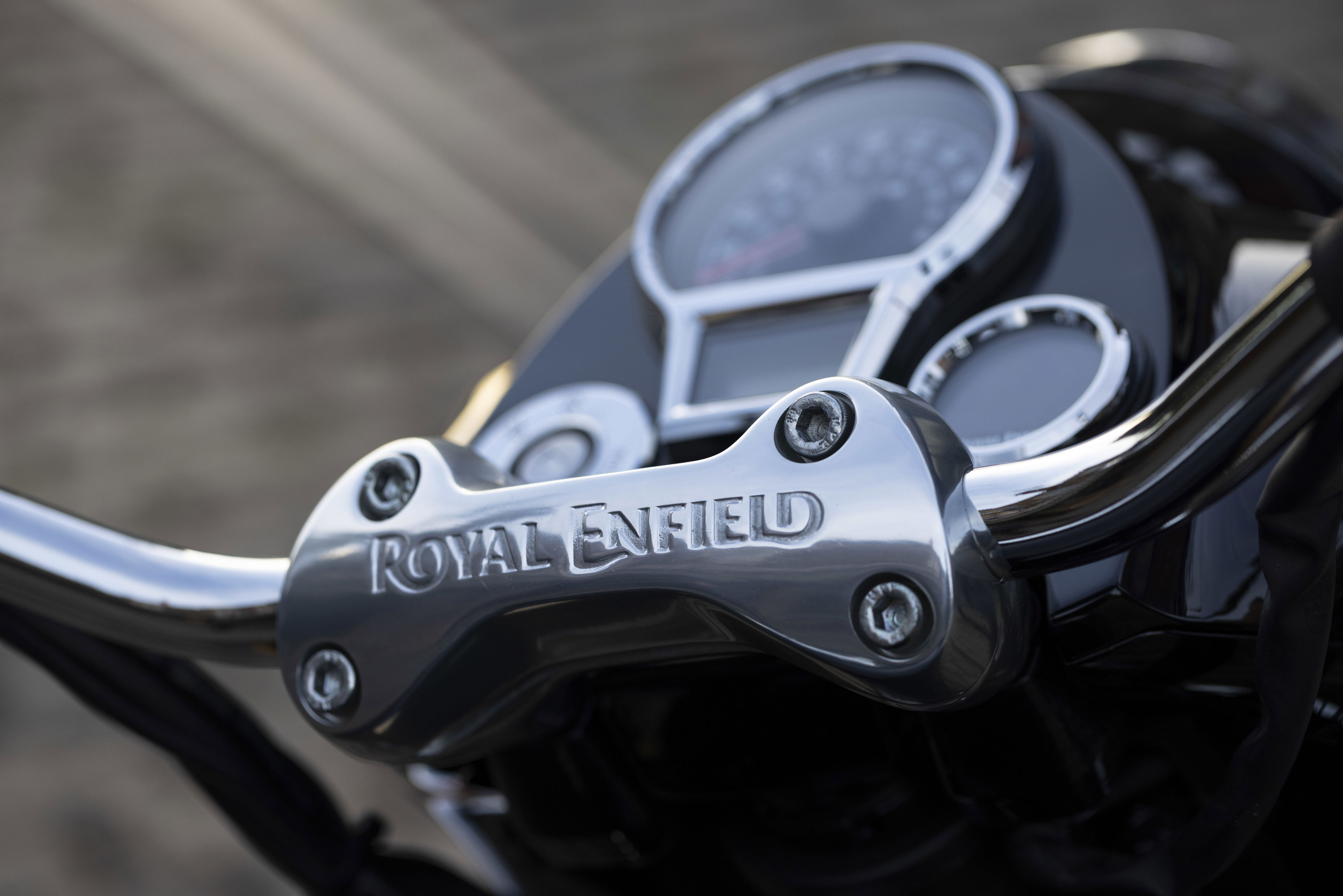
I found - with two different pairs of boots - that the gearlever was slightly too low, something I’d quickly remedy if it was mine, but the gearbox works very well indeed, if you use a firm touch. The engine responds well - smoothly - to the throttle including at filtering speeds, and the whole thing feels of-a-piece, nicely balanced, even in traffic, the weight not really noticeable on the move.
Open it up and there’s a very pleasing pulsating sensation from the engine, especially - say - if you’re in a relatively high gear, going up hill, when it feels just as a proper old twin engine should. It’s no fireball but there’s always plenty of ‘poke’ when you need it, for fun on the bends or for overtaking.
Talking of bends, it swings around them surefootedly, holding its line nicely enough, although on badly broken surfaces (there are plenty of those) I’d have liked a little more sophistication, a little more damping, from the suspension, particularly the twin shocks at the rear. It’s not bad (they are decent enough modern Showas, after all) but even on the softest setting I found them a little harsh and lively over ridges and potholes. Maybe that’s what comes of having a bad back.
Rebel rouser
I did like the ‘cruiser’ feel though, which isn’t something I normally go for. I felt - with those wide handlebars - that I was riding one of those old, post-war Harleys, or a Californian cop’s patrol bike, especially with the off-beat sound from the engine. I’ve never been accused of looking cool on a bike (or anywhere else) but it did feel a little Rebel-Without-A-Cause.
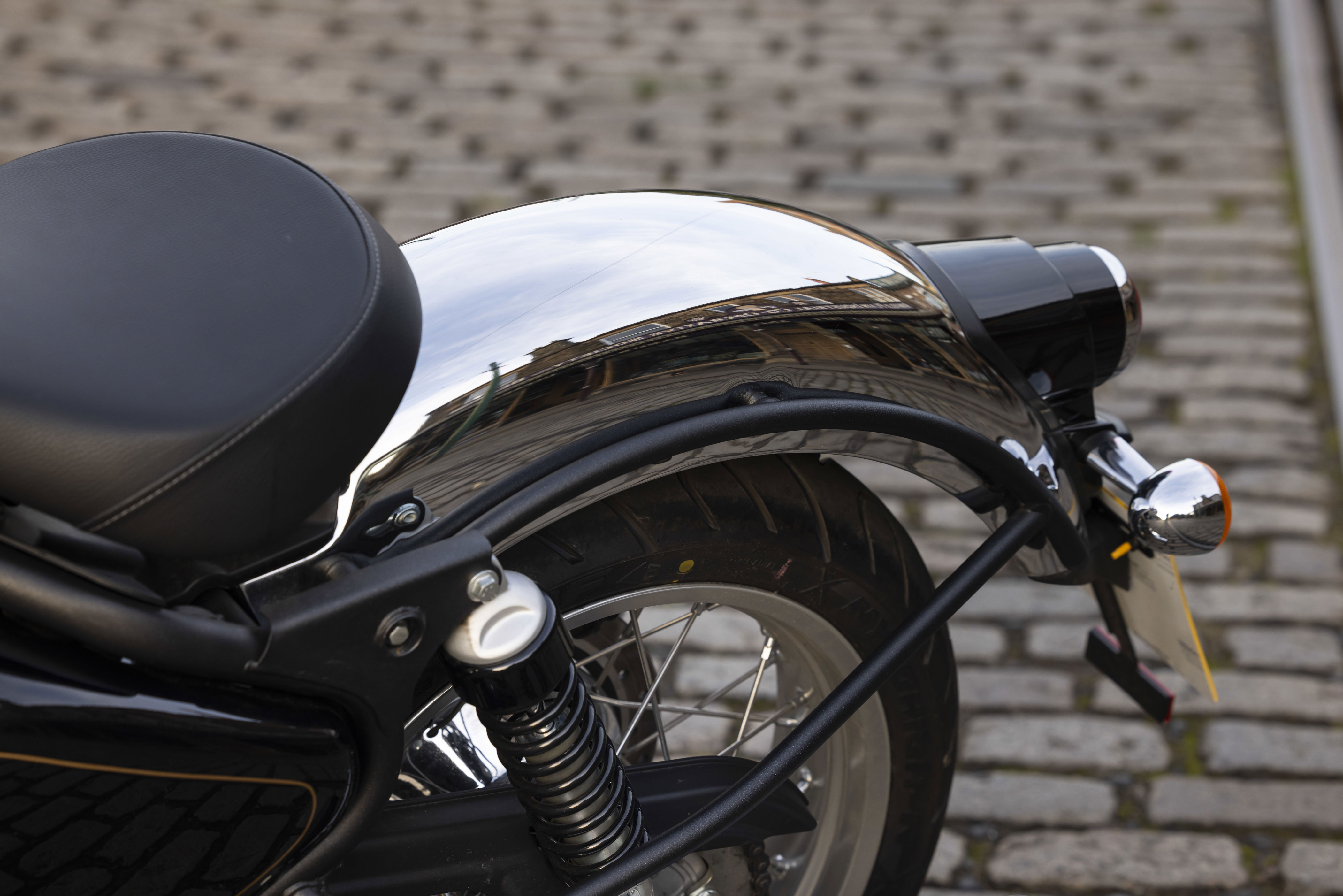
The old-style saddle was comfortable enough and, even on long stretches of open road, despite the nakedness of the bike, I didn’t feel particularly windblown; maybe the big headlamp acts as a deflector.
Close-up, the Classic has great build quality. The paint (Teal Green on ‘mine’, strikingly similar to the livery on a food delivery moped I followed) looks perfect and sparkly, while the controls all felt well-built. I liked the clear analogue speedo (although I’d have liked it angled slightly more towards the rider so that it would be possible to gauge the precise position of the needle in 20mph limits, where straying even marginally can land you with a fine).
Luxuries? Not many. There’s a USB-C charging port, RE’s Tripper navigation app display next to the speedo and the lighting is LED. You don’t get rider modes or traction control but I didn’t miss them.
I liked the bike in town - and out on B-road bends. I’m not sure I’d choose it for longer tours, particularly. Fast riders may find it grinds out in the pegs quickly on sharp bends, but - being more of a plodder - that didn’t bother me. Stopping fast requires quite a squeeze on the front brake, too.
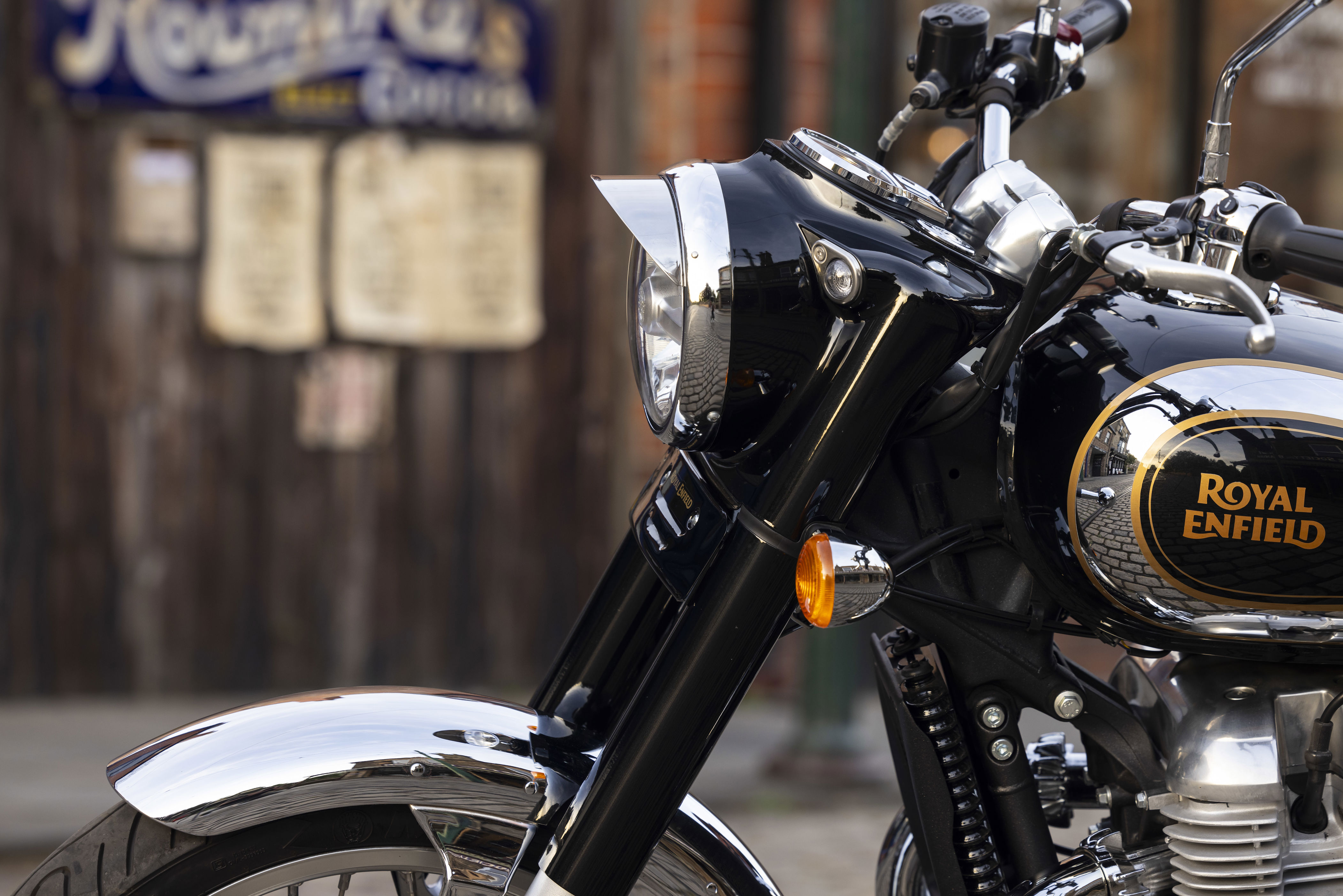
What you get with the Classic is a beautifully-styled bike that can be fun and relaxing to ride - and a bike that, when parked up in the pub car park, you’ll probably choose a table close-by in the beer garden, just so that you can admire it, especially if you choose the black and chrome model, rather than Deliveroo green. And that’s not a bad thing at all.
The Facts
Royal Enfield Classic 650
Price: From £6,499 for basic paint finishes.
Engine: air-cooled SOHC four-valve parallel twin
Max power: 46 bhp
Max torque: 38.5 lbs/ft @ 5,650 rpm
Seat height: 800 mm
Weight: 243 kg
Top speed: 85 mph
CO2: 104.5 g/km
It’s all in the bag
Sorting out what luggage you need for your bike can easily take just as long to sort out as deciding which bike to buy. Do you go for heavier ‘hard’ luggage fixed to permanent, rigid mountings, or for lighter ‘soft’ bags that can be strapped on, but that are more vulnerable to theft? Tank bag, or tail bag?
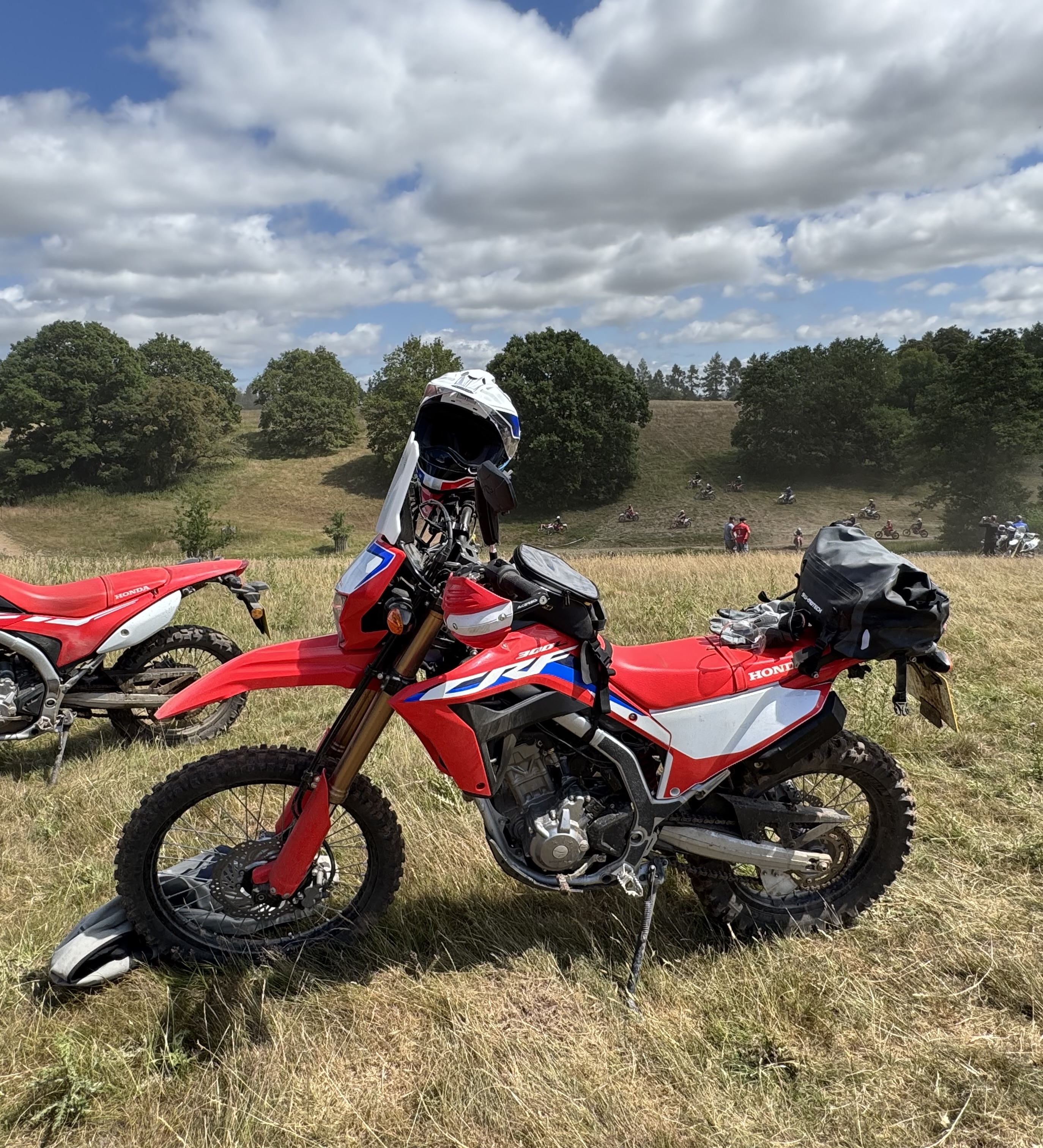
Panniers - at the side - or a bag that sits on the pillion seat? Should you splash out for a fitted rack too, or just hope that - if you go ‘soft’ - you can find enough sturdy anchorage points for the nylon straps? Do you want totally waterproof luggage (slightly more cumbersome and maybe heavier) or lighter, non-waterproof kit, and wrap your gear in bin bags?
On my Honda CRF300L - which I use for green-laning - I decided against hard luggage as I’ve tried to keep the bike as light as possible (useful when you fall off and have to pick it up). So I tried strapping tank bags on fore and aft, with spider nets, but they never felt secure and didn’t hold enough for overnighters.
I’ve now discovered a great solution for day, or longer overnight trips; SW-MOTECH’s (less than catchily-named) ‘Drybag, 180 tail bag Waterproof grey/black 18-litre’. It’s a star turn, that has passed my own stern tests with flying colours.
Trail mix
Generously sized (but not so big that it flaps around), it took an hour or so to fit the included anchoring straps to various points including the seat bolts, as I had to remove the seat and faff around but now, all I have to do when I’ve filled the bag up and rolled the velcro’d waterproof neck tight shut, is clip it onto the bike, which takes seconds. Lightweight, tough, capacious and with an extra splash-proof pouch on the side, it has withstood a mix of heavy rain, mud and copious amounts of grit and dust on the trails.
I crammed it with a generous toolkit, a heavy locking chain and chunky padlock, an electric tyre pump and enough clothing for four days when I chugged out of London and up the M40, to the Adventure Bike Festival in Warwickshire. It was easy to detach and carry into the hotel on arrival. It was pretty heavy once loaded, but has a sturdy carrying handle on the side. It was then perfectly adapted to carrying far smaller loads (it rolls up tight when empty or partially full) as I rode to the festival each day and hit the trails. Weighing less than a kilogram empty, it is far lighter than ‘hard’ luggage too.
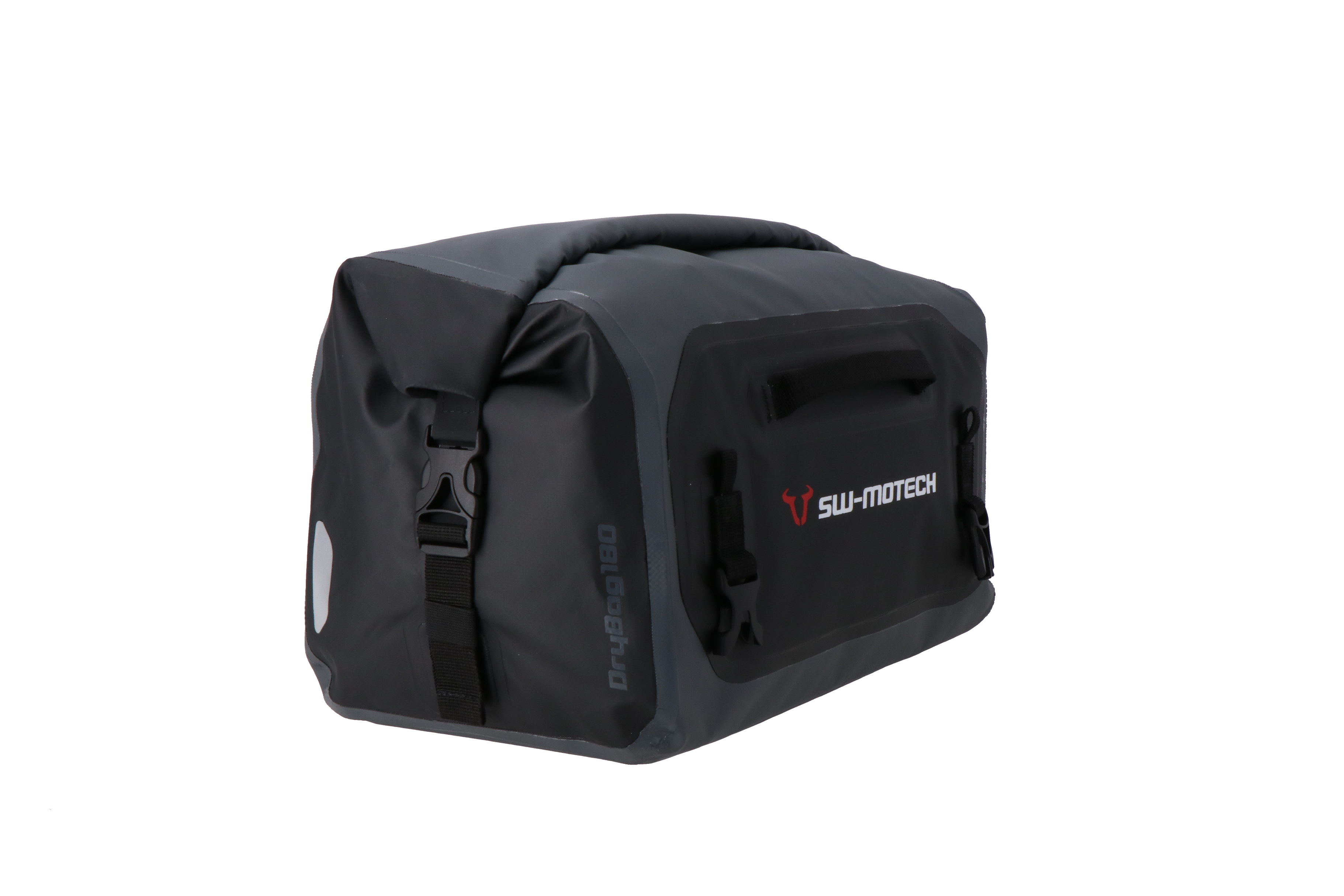
Once parked up on-site, I used the bag to stash my jacket and protective gear, even if it was less secure than it would have been inside a lockable top box. The bag, which costs £58.99, has also proved just right for shorter day trips, including riding out of The Smoke and onto trails. When I don’t need luggage, I simply unclip it.
I might, in future, combine it with additional strap-on panniers for longer trips and better weight distribution for that chain and toolkit, but for now it’s proved indispensable, adaptable, while it’s also relatively inexpensive and easy to use. It’s also designed to fit a wide range of motorcycles. I wouldn’t leave valuables inside MOTECH’s Drybag and park up, as it’s not secure. But it is easy to remove and lug around if necessary. It also means that when removed, there are no ugly, weighty ‘fixings’ to worry about. I like it because it’s simple, rugged, capacious, flexible and practical.
If I use it on other, temporary bikes, I might try fixing it securely with strong cable ties, to avoid unpicking the supplied straps.
The Drybag is available in six sizes, is made from elastic PVC material, can be fixed length or cross-ways, has taped seams and reflective detailing. It comes with four fixing straps and paint protection film, as well as fitting instructions. Buy it here.
Register now for one of The Standard’s newsletters. From a daily news briefing to Homes & Property insights, plus lifestyle, going out, offers and more. For the best stories in your inbox, click here.